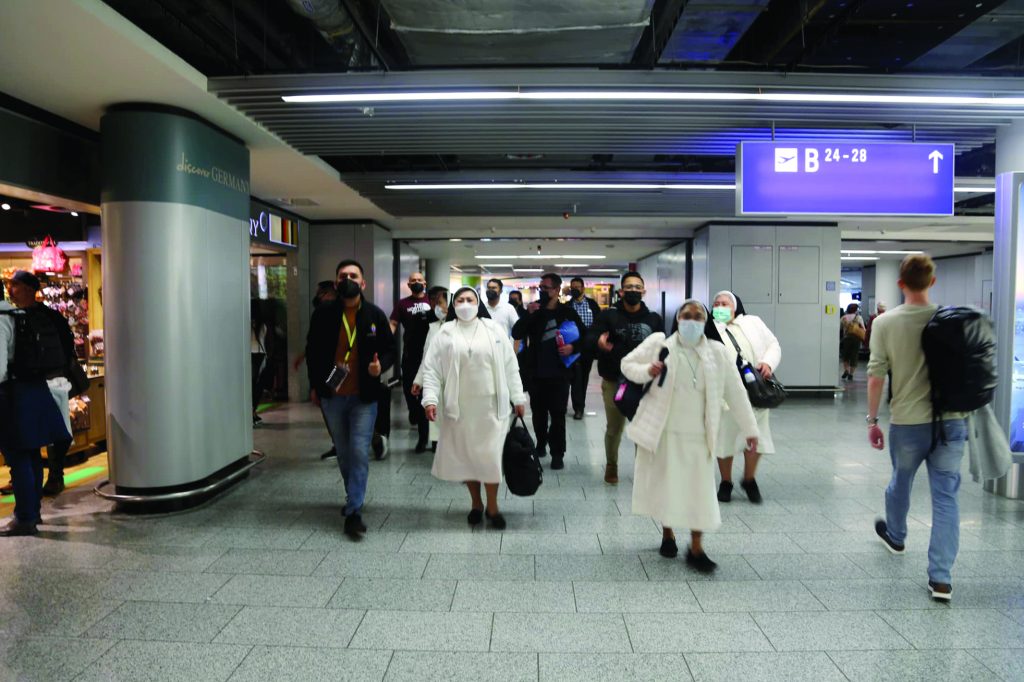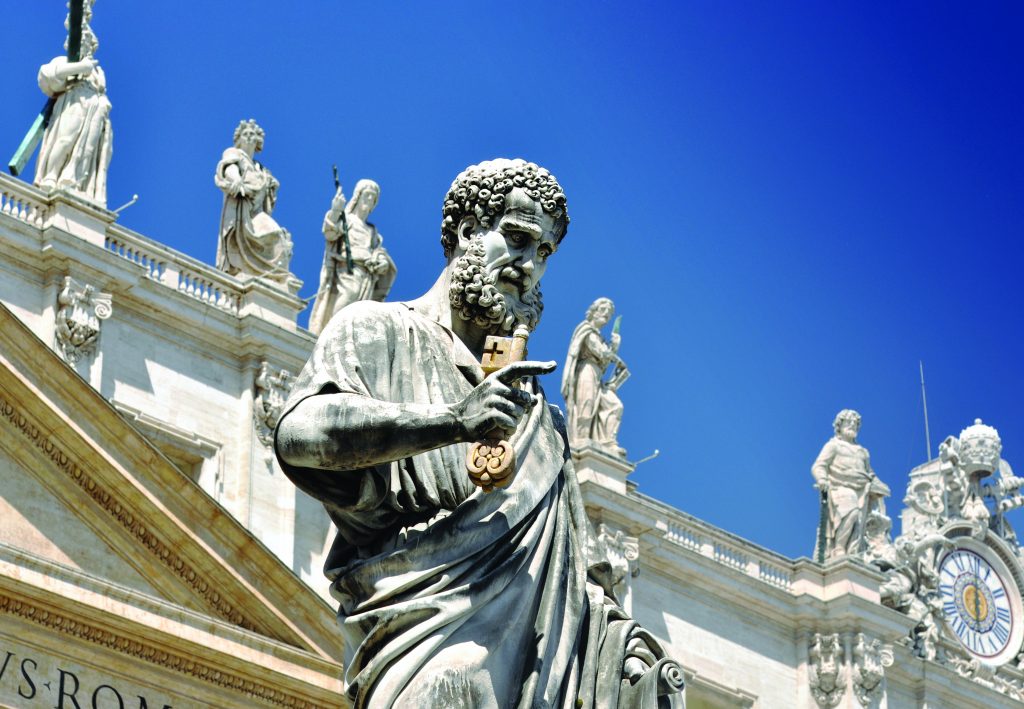Family vacations
Summer: Pilgrimages & Providence
Dr. Anthony Lilles
It’s a couple of hours after midnight at an airport in Munich, with workers vacuuming the concourse. Sixty-five pilgrims from St. Patrick’s Seminary & University are trying to sleep as we wait for our flights later today. On our way to Bosnia-Herzegovina, we were stranded at an airport because of severe winds and mechanical problems with our flight. So far there has been much excitement with both laughter as things go wrong and smiles as unexpected things go right. Somewhere in this, I am hoping our future priests catch life-changing glimpses of divine providence. A pilgrimage is pregnant with such glimpses, even at an airport in the dead of night.

Pilgrimage was an important part of my own childhood. While Santa Cruz was where I went to school, my extended family farmed in the San Joaquin Valley. Summers included many long car rides back and forth across the Pacheco Pass. While my grandparents were not particularly pious, they would occasionally stop at Mission San Juan Baptista, if only to break up the long drive.
My brothers and I loved the freedom to run in this protected garden paradise. The cloister-surrounded courtyard enchanted us with paths winding around beautiful flowers, exotic vegetation and old California artifacts. If it smacked of adventure, it also harkened back to a less secular and less frenzied time.
We ran through the old cemetery terrorizing squirrels and looked at the grave markers, seeing who could find the oldest one. The enchantments of Spanish California worked in our imaginations and my grandfather knew stories about Three Finger Jack and the Murietta Brothers. It was as if El Zorro were about to ride around the corner. Sometimes we would even have a picnic nearby. We also would make a short visit to the Blessed Sacrament.
The adobe walls of the mission told Spanish California’s story of sacrifice and prayer, of difficult struggles to establish order and prosperity amid an arid wilderness while bringing the Gospel to people very different from themselves. If we puzzled over the misunderstood intentions and unconscious motives that were part of the story, what most spoke were the vestiges of love that remained, last witnesses to the effort to do something beautiful for God. In the end, what actually motivated these priests to leave everything behind and brave all kinds of hardship at the edge of the world?
Long after the visit, my mind would imagine the friars, the Native Americans and the Spanish soldiers. I learned enough to know that there was tension between military, mendicant and Native cultures. Surely, the story of Cain and Abel, of brother against brother, was part of this. Yet, deeper than fraternal strife, there was an awareness of a time more friendly to humanity, the kind of time that one can only know when difficult differences are faced while striving toward a sacred order together as a people. Memories of grace are shared not so much in the accomplishment of this but in the frail unnoticed effort disguised by its failures. This is the very heartbeat of a family. Tasting this, even for a forgotten unconscious instant, was a sacred moment for my family, a moment of solidarity and mutual belonging right amid the normal sort of goofing around, laughter and fun that makes a family pilgrimage.
Memories of grace are shared not so much in the accomplishment of this but in the frail unnoticed effort disguised by its failures. This is the very heartbeat of a family.
We understood in some way that such stories started long before our family discovered them and that they would go on long after we were forgotten. We also had a sense that these stories were not foreign to our own story, but instead a hidden part of our lives. As a child I wondered whether the Franciscans ran the mission with this same sense or whether the Native people who helped build it also tasted it. I wondered what it was like when they prayed together. All these thoughts evoked a kind of nostalgia for something that only children can understand. A sense of the way things ought to be. A sorrow that they were not so. A hidden hope that something lost might one day be restored.
In hindsight, such movements of the heart offer a reprieve from the absolute claims that secular life can make. For a small part of an afternoon, life was about something more than the next learning activity or chore or game. We had glimpsed a sacred order to life, a mystery only divine providence explains.
While this sacred order is felt more than understood, this feeling touches on something essential to human life. Reigniting a sense of it is the key to restoring a more meaningful culture in California. At stake is a society a little more friendly to our families and faith. Indeed, I am not sure one has truly lived if one has not tasted it. If we adults make a little effort, not only can children glimpse these flashes of this sacred order in the intimate moments that families, but we ourselves can find them too. The effort involves a journey of faith, one that embraces the pilgrimage spirit of those early California friars.

This is a sense that I carry into spiritual formation in general and the formation of seminarians more specifically. That is why I find myself surrounded by our seminarians on a spiritual journey into the heart of Bosnia-Herzegovina. My hope is that they too will taste some of that nostalgia for the sacred. Even in the wake of human disasters brought on by National Socialism, communism and imperial expansionism, Pope St. John Paul II helped us to see that there is a spiritual culture among the Slavic peoples that can accept deep differences and even painful memories in pursuit of a sacred order to life together. I hope our men will gaze on this horizon with the pilgrim pope.
I write this even as war is raging several hundred miles east of where our small group of pilgrims is trying to sleep. Brothers struggle against brothers just as did Cain and Abel. Such is the catastrophe of war. Yet fraternal strife is always against a backdrop of a love that ought to be and that by Christ Jesus is in fact flowing into the world. I am hoping that our men will encounter this divine inflow in the tragic and inspiring stories of these peoples, stories that live in their churches and in their sacred landscapes, stories filled with beautiful visions and devotions. Mary, the queen of peace, is certainly part of this encounter. In such flashes of glory, the heart discovers those deeper capacities for love and peace that only faith can know.
–Dr. Lilles is academic dean and associate professor of spiritual theology at St. Patrick’s Seminary & University

